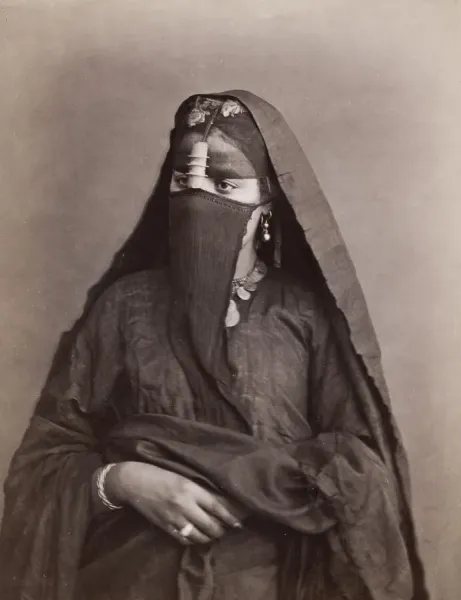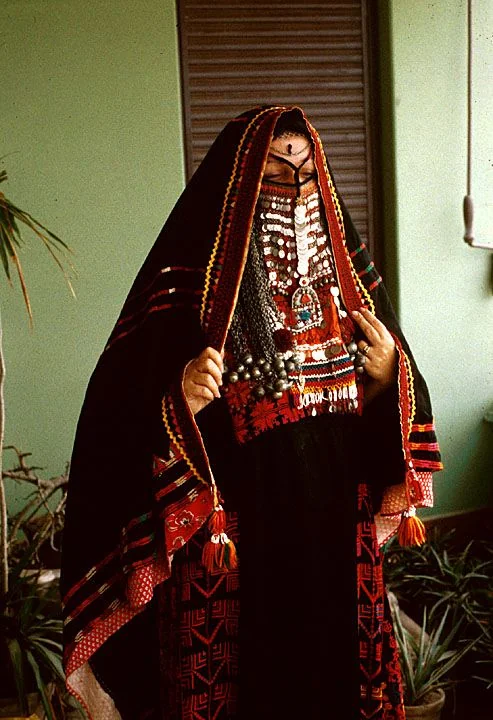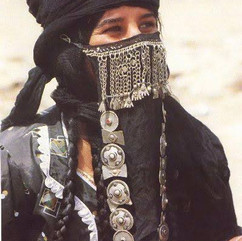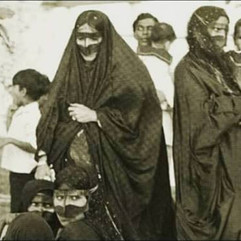The Veil: History and Culture
- Folkloristan
- Jul 15
- 3 min read

Veiling is often perceived today as a symbol of oppression, particularly in relation to Muslim women. This is somewhat ironic, given that the majority of jurists do not consider it mandatory. Regardless, veiling as a practice predates such debates by several centuries. We look at the history and culture of the veil in pictures.

Veiling was once common across many cultures, far beyond the Islamic world. In 14th-century Spain, for example, women covered their heads, and similar traditions continued into the later Middle Ages in the Basque Country. Bosnian women also traditionally observed the veil.

Morisco women in 16th-century Spain (circa 1530) wore a face veil known as the tapado. One image shows a Morisco woman lifting her amalafa (white veil) to reveal both eyes, while a Christian Castilian woman beside her uses her mantle to cover just one eye.

These traditions closely resemble the Afghan chaddari, or veiling practices from Dhaka, which also cover the face. The former is now known as the Shuttlecock Burqa - a derogatory term, believed to be coined during the British Raj.

Illustrations from 17th-century Switzerland by Johann J. Ringle. Two Christian women: one on her way to church, not in mourning, and another in mourning. Both wear traditional head coverings called sturz and tüchli. Veiling was a Christian practice tied to emotional expression.

Moving eastward, photographs from the late 19th century show women in the Ottoman Empire and Albania. Turkish women, a Muslim woman from Selanik (modern Thessaloniki), a Jewish woman from the same city, and a Bulgarian woman from Perlèpè, each with distinctive head coverings.

In 19th-century Iran, both Muslim and Zoroastrian women were photographed with head coverings. The paranja, a full-body veil worn by Tajik women, and the chaddar, common among Iranian and South Asian women, were widespread.

Married Turkmen women traditionally covered the lower half of their faces with a shawl, much like how the chaddar is worn in parts of Pakistan, particularly in KPK and Balochistan.

In 19th-century Algiers, veiled women were a common sight. In Tunis during the 1930s, Jewish women also observed face veiling.
In Egypt, veiling practices varied by ethnicity.

In Qajar Iran, women from higher socio-economic classes, particularly those in the urban areas, often wore face veils.

Nomadic communities like the Qizilbash of Iran and Kuchi women of Afghanistan, however, did not observe the face veil, highlighting how cultural context influenced the practice more than religion alone. Typically, nomads such as the Jaats in Pakistan and other working-class women, such as peasants, also did not observe the veil.

In modern-day Pakistan, veiling took various forms. Hindu women in Sindh traditionally veiled their faces with their sarees, a practice known as ghoongat. Among both Hindus and Muslims, especially upper-class women, veiling the face in public was the norm across Sindh and Punjab. Hindu women in Tharparkar continue to practice the Ghoongat, particularly young and middle-aged women. Little girls and aged women wear it upon personal preference.

Interestingly, in Pakistan, the ghoongat lives on in pre-wedding rituals. The bride-to-be veils her face a week before the wedding, stays indoors, and avoids interaction with men outside her immediate family. This practice is believed to ward off the evil eye (nazar). Variations of this practice are found in Balochistan, Sindh, Punjab, and Khyber Pakhtunkhwa.

The chaddari, often associated with Afghan women, was also traditionally worn by Sikh and Hindu women in regions like Tirah, Kohat, and other areas of present-day Khyber Pakhtunkhwa, Pakistan, underlining its cross-religious and regional use.
Veils worn by Yemeni and Bandari women. Not only cultural, veils in harsher climates are often practical, aiming to protect against the sun and the sand. They also mark social and marital status. Similar was the case with veils in traditional veils from Saudi Arabia and Oman.
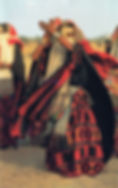
Our favourite picture of a veiled woman of an African, Rashaida woman, mid-dance, fully veiled. It is a moment of joy. The veil is not a restriction, but a part of her identity. It de-centres the colonial gaze - she is unapologetically at ease in cultural self-expression.
